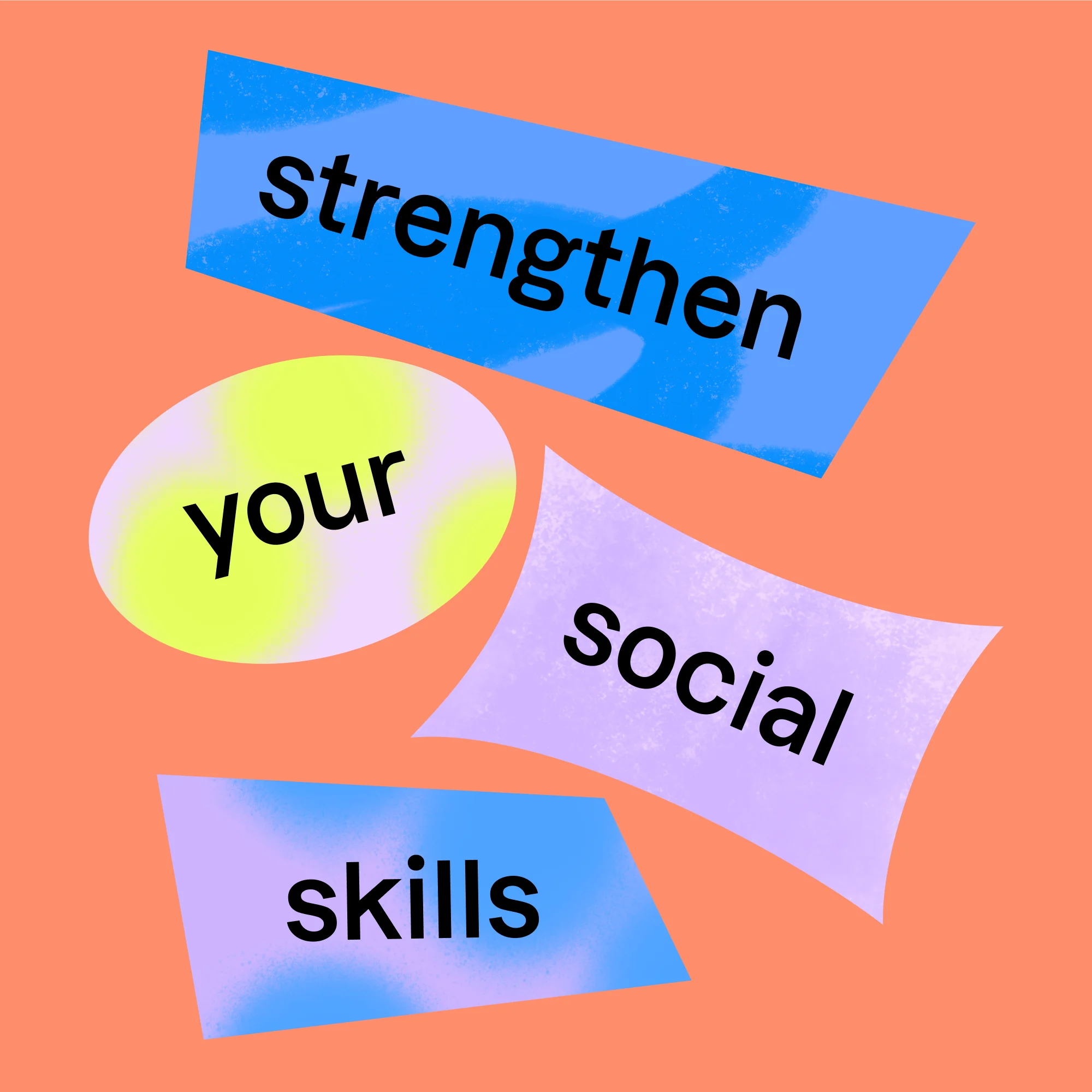Aaaagh, small talk! Why does it seem so daunting to some and so natural for others?
Being able to participate in small talk is an important social skill. It helps you meet new people and make friends. It also enables you to connect with coworkers or customers at your job.
But for some people, making small talk can feel stressful, overwhelming, or awkward. Some individuals experience social anxiety, which can make conversation feel especially hard.
Read on for some helpful tips to get better at small talk–and even make it fun for yourself. These techniques can help you feel more confident when you’re talking with other people, no matter who they are.
What is small talk?
Small talk refers to casual, polite conversation that helps you connect with another person. Small talk often focuses on light or unimportant topics, but it’s a good way to start building relationships with other people. You might use small talk when meeting with a client or customer, attending a party, or waiting with other parents to pick up your child.
It’s important to understand that while small talk serves a purpose, not all cultures engage in it. In some places, asking about a person’s occupation is a great way to start a simple chat. But in France or Italy, for example, this is considered a boring question.
Small talk often focuses on unimportant topics, but it’s a good way to start building relationships with other people.
Scandinavians don’t tend to appreciate small talk. Brazilians, however, are fond of speaking with strangers about all types of topics.
In the United States, small talk can be helpful personally and professionally, as outlined above. So, whether you need this skill for work or to simply have a better time at parties, how do you improve your small talk?


3 steps for improving your small talk
Think of the pneumonic ARE: as in, you are going to have fun doing this!
1 A is for Anchor
How do you start small talk? Begin your conversation by anchoring it in a mutually shared reality. Make a comment that connects you to the other person in the current circumstances.
What are some good topics for small talk? Keep things tangible and simple: the weather, the place where you are, the food, the situation. Avoid being too superficial or attempting to be too clever.
Here are some examples:
Standing in line at an event buffet: “We have a choice of pie and cake, that’s great.”
While leaving a class: “The professor went much more in-depth on that topic than I anticipated.”
At the gym: “You have good form when you’re lifting.”
Just be genuine and honest. Don’t spend time trying to think of a witty statement. Most people understand that these initiations are just that: simple ways to open the door and initiate more verbal exchange.


2 R is for Reveal
Next, share something specific about yourself that’s related to the initiation you provided. Going back to the examples from above, you might use:
Standing in line at an event buffet: “I don’t have many opportunities to eat pie, I’m going to try that.”
While leaving a class: “I think I’m going to read a little more about the subject because it was pretty interesting to me.”
At the gym: “I just started with my training and hope to get that good at some point.”
Sharing a small truth about yourself invites the listener to learn more about you and share their own perspective.


3 E is for Encourage
Finally, you can follow up with an open-ended question related to the topic. An open-ended question is one that can’t be answered with a simple yes or no. Continuing from our previous examples, it might look something like this.
Standing in line at an event buffet: “When is the last time you’ve had the option for both pie and cake?”
While leaving a class: “So why are you taking this class?”
At the gym: “What tips would you give a beginner like me?”


More tips for making small talk
Once you’ve used the ARE method to get the conversational “garden” growing, continue to add “water and nutrients.” Just like a garden, if left unattended, this type of small talk can dry up and lead nowhere.
Try to build on the previous verbal interactions. Offer an equal amount of comments and questions. This is important because over-commenting can appear attention-starved and uninviting to a new listener. Too many questions can come off as an interrogation.
Above all, do your best to listen with interest and respond with honesty.


What if your small talk doesn’t go anywhere?
Using the ARE method will give you a simple mental map to ensure an exchange of information that builds upon itself and, in most cases, leads to verbal interaction. However, there may be times when the other person simply doesn’t respond or extend the conversation. They may be shy. Don’t push it. Move on and find another person who may engage with you.
What if conversation still feels difficult? If you’d like to continue to improve your conversational or social skills, contact a speech therapist. They can provide guidance, helpful techniques, and the opportunity to practice these skills in a comfortable and controlled environment. Find the right speech therapist for your needs here.
How Expressable Can Help
Concerned your child isn't reaching age-expected milestones? Looking for communication support from a professional? Expressable is a national online speech therapy practice serving children and adults. We treat all major areas of communication and feeding, offer flexible hours including evenings and weekends, and accept most major health insurance plans. We’re proud to have earned more than 3,000 5-star reviews from our clients (4.9/5 average).
Our therapy model is centered on parent and caregiver involvement. Research proves that empowering caregivers to participate in their loved one’s therapy leads to better outcomes. That’s why we combine live, 1-on-1 speech therapy with personalized education and home practice activities for faster progress.
Communication is more than words. It’s how we share how we feel and show who we are. We’re here to help you or your child do just that.

 Laura Thorburn, M.S., CCC-SLP
Laura Thorburn, M.S., CCC-SLP











